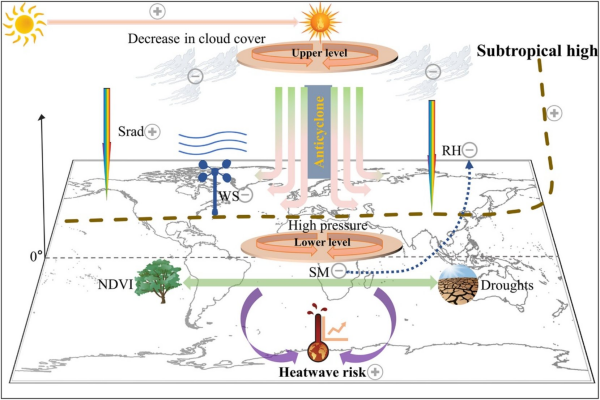
Global warming has exacerbated extreme events, especially frequent heatwaves which have seriously affected human health, ecosystems, and economies.
To better understand global heatwaves, a research team led by Prof. CHEN Yaning from the Xinjiang Institute of Ecology and Geography (XIEG) of the Chinese Academy of Sciences, assessed heatwave risk and explored its driving mechanisms. Their findings were published in Earth's Future.
The researchers constructed a heatwave risk index to assess the risk levels with Berkeley data and ERA5-Land data, and used Geodetector to analyze the driving mechanisms of heatwave risk.
Heatwaves have become more frequent and intense, with the global average of heatwave risk increasing 4.5-fold over the past 120 years (1901–2020), the study found.
In addition, the researchers compared the heatwave occurrence and risk in drylands and humid regions. They found that while drylands faced more frequent heatwaves, humid regions absorbed more heat with higher intensity of heatwave risk.
Researchers also found that regions with high heatwave risk are often accompanied with high upper pressure, high surface pressure and anticyclonic anomalies, leading to reduced cloud cover and increased temperatures.
"The increased risk of heatwaves in humid regions is expected to cause greater harm and should not be overlooked," said Dr. WANG Chuan, first author of this study from XIEG.
This study can help enhance the understanding of global heatwave risks, and provide scientific guidance for developing disaster prevention and mitigation measures.

Schematic diagram of possible physical processes leading to the occurrence and intensification of heatwave risk. (Image by XIEG)

86-10-68597521 (day)
86-10-68597289 (night)

52 Sanlihe Rd., Xicheng District,
Beijing, China (100864)

